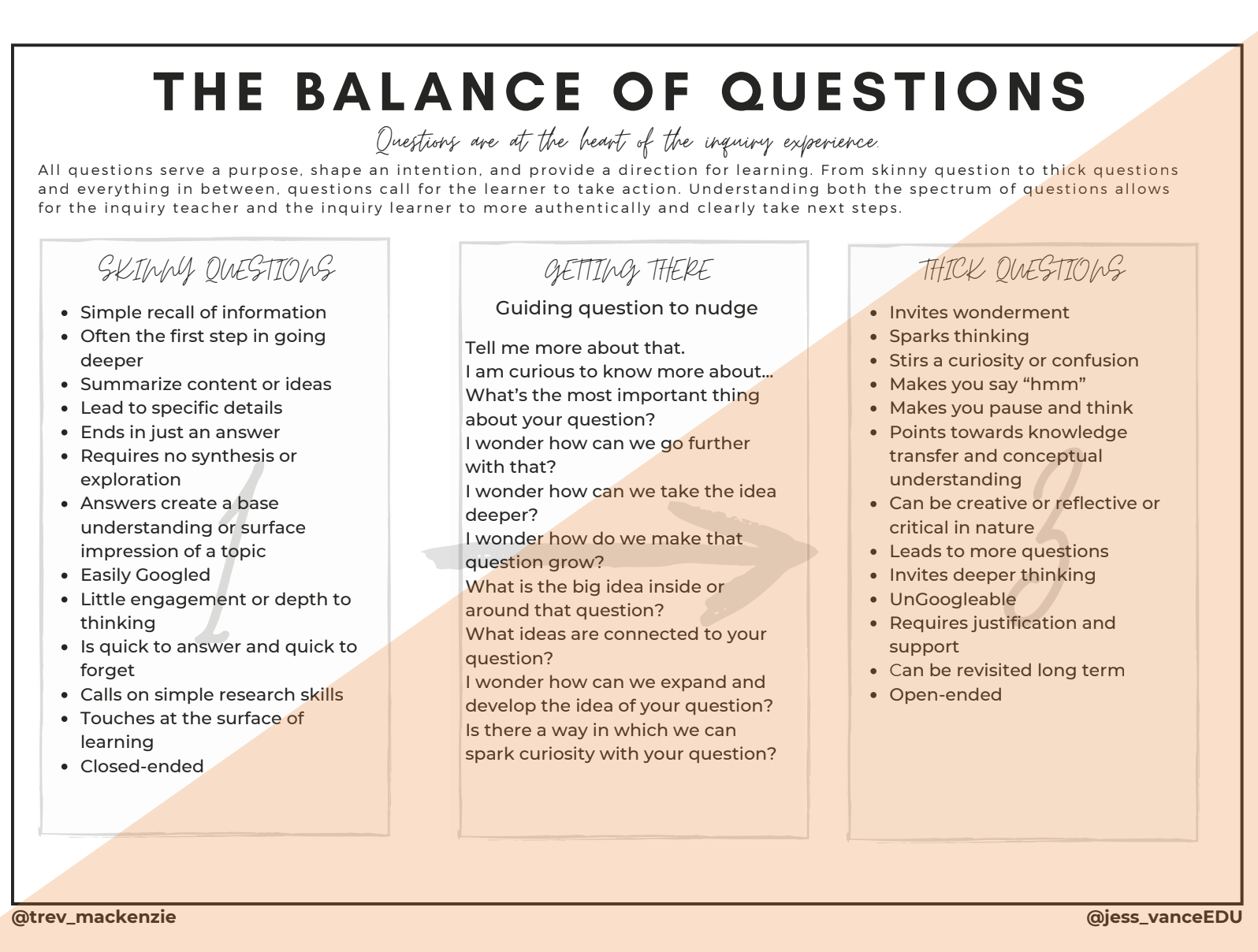An Inquiry Classroom Questioning Resource
Questions have a way of being more than just a single voice. When we shift our mindset about the purpose of questions, the students do the heavy lifting in our classrooms and questions then become the vehicles we use drive the direction of learning. But, how do we get to this space?
This year, in particular, I’ve been working with a team of teachers who has committed to a year long inquiry about questions and questioning. After facilitating a few QFT’s (Question Formulation Technique) in their classrooms at the start of the school year they became curious as to why the questions that their students produced felt so one dimensional and lackluster and how they could be more intentional with their roles as facilitators. Together, we’ve been exploring the ways we notice what’s unfolding in the classroom, bringing our awareness to our students and our practice in entirely new ways. The work is messy. The learning experiences don’t always produce what we expect, and yet, we use these as critical artifacts that contribute to the learning and tell us more about our learners.
Coupled with collaborative conversations and tossing back and forth ideas with Trevor MacKenzie, the Balance of Questions resource include some of the structures we’ve been using during some of our professional learning sessions with one another and, of coarse, with our students. It’s been quite fun to slowly see this resource gain traction, read emails that contain photos of its application in the classroom and respond to DMs on social media as so many more of you continue to tinker and play with the question protocol. These structures provide some of the framework for us to play and explore. They allow us a space to think about our thinking. They give us time to reflect on the ways each one of our moves cultivate and honor a culture of curiosity.
This resource is meant to be tucked aside as you plan for curiosity, one that you reference when you reflect on the questions that your learners generate but not given to your learners. It’s meant to support your thinking and provide a frame for the ways you give feedback and collaborate with your learners. I too refer to this often and find incredible value in using the questions in center to help scaffold and structure language for my learners.
And while questions are synonymous with inquiry, they are not the only marker that defines an inquiry classroom. This resource is just “another worksheet” if our our mindset and approach to curiosity and questioning is fixed. These structures are meant to support teachers in their practice and approach to using questions to guide the learning in the classroom.
Use this resource and make it your own. Explore the ways it opens up conversations and invites more space for you and your students to co construct the learning with one another.
I wonder where it will take you?


